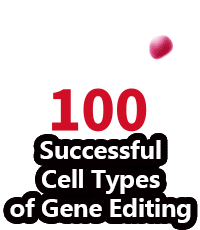Trivalent CAR T Cells a Triple Threat to Leukemia Cells

A trident can make spearfishing more of a sure thing. Similarly, a T cell engineered to brandish three prongs—chimeric antigen receptors (CARs)—can kill cancer cells more efficaciously than single-pronged or even double-pronged CAR T cells, let alone ordinary, unmodified T cells. According to a new study, triple-pronged CAR T cells may be better at overcoming antigen escape relapse, which can occur when cancer cells effectively shed antigen targets through downregulation, acquired gene mutation, or outgrowth of tumor subpopulations.
The new study, from Children's Hospital Los Angeles (CHLA) and Baylor College of Medicine researchers, describes the engineering of trivalent CAR T cells and their performance in laboratory and animal models of acute lymphoblastic leukemia (ALL), the most common childhood cancer. Although most children with ALL respond well to chemotherapy, some experience resistant or relapsed disease. CAR T-cell therapy was developed to bridge the gap for those children for whom chemotherapy was insufficient.
The therapy uses the patient's T cells, isolating and genetically modifying them to carry CARs capable of recognizing CD-19, a protein (antigen) found on leukemia cells. When the T cells, now CAR T cells, are introduced into the patient, the immune system attacks the cancer. Though initial treatment using CAR T cells offered meaningful results, nearly half of patients who received the therapy later relapsed because the cancer produced less protein CD-19 and became less invisible to the T cells.
To help prevent antigen escape in ALL, CHLA's Abdel-Azim, MD, collaborated with Baylor's Nabil Ahmed, MD, to engineer a T cell that targets not only CD19, but also two other proteins found on leukemia cells, CD-20 and CD-22. "It's like using a trident to attack the cancer instead of a spear," said Ahmed.
Abdel-Azim, Ahmed, and colleagues published an article("CAR T-cells that target acute B-lineage leukemia irrespective of CD19 expression")that describes the engineering and performance of three-pronged weapon. This article, which appeared in the journal Leukemia, emphasized that a single transgene was introduced to express the three CAR molecules. Theoretically, this approach decreases the risk of insertional mutagenesis compared with repeated, separate integrations of multiple genes and associated promoters into the T-cell genome.
"CD19/20/22CAR T-cells killed CD19(−) blasts from patients who relapsed after CD19CAR T-cell therapy and CRISPR/Cas9 CD19 knockout primary BL-ALL both in vitro and in an animal model, while CD19CAR T-cells were ineffective," the article's authors wrote. "At the subcellular level, CD19/20/22CAR T-cells formed dense immune synapses with target cells that mediated effective cytolytic complex formation, were efficient serial killers in single-cell tracking studies, and were as efficacious as CD19CAR T-cells against primary CD19(+) disease."
The new CAR T cells, named TriCAR T cells, targeting CD-19/20/22 are significantly more effective than T cells that target CD-19 alone. When the leukemia cells stopped producing CD-19, making them invisible to the FDA-approved CAR T cells, the TriCAR T cells were still effective.
"These newer CAR T cells bind to more cancer cells, and these connections are much stronger," said Abdel-Azim. "Not only do they bind better, but they are binding again and again."
These early findings point the way to future clinical trials to test the therapy. "Although the toxicity of our CAR T-cell product will need to be assessed in carefully designed human trials, the effectiveness of CD19/20/22CAR T-cells against CD19(−) escape BL-ALL and CD19(+) BL-ALL alike compares very favorably to that of the benchmark CD19CAR T-cells,” the scientists concluded. “Independent of CD19 expression, CD19/20/22CAR T-cells could be used as salvage or frontline CAR therapy for patients with recalcitrant disease."
Ubigene Biosciences is co-founded by biological academics and elites from China, the United States, and France. We are located in Guangzhou Science City, which serves as a global center for high technology and innovation. Ubigene Biosciences has 1000㎡ office areas and laboratories, involving genome editing, cell biology technology, and zebrafish research. We provide products and services for plasmids, viruses, cells, and zebrafish. We aim to provide customers with better gene-editing tools for cell or animal research.
We developed CRISPR-U™ and CRISPR-B™ (based on CRISPR/Cas9 technology) which is more efficient than general CRISPR/Cas9 in double-strand breaking, CRISPR-U™ and CRISPR-B™ can greatly improve the efficiency of homologous recombination, easily achieve knockout (KO), point mutation (PM) and knockin (KI) in vitro and in vivo.
Genome Editing Platform
——Focusing on the Application of CRISPR-U™ and CRISPR-B™ Gene Editing Technology
1. Provides various types of gene-editing vectors for different species.2. Provides different virus packaging services, including lentiviruses, adenoviruses and adeno-associated viruses.3. Provides high-quality services for gene knockout, point mutation and knockin cell lines.
Cell Biology Platform
——Focusing on primary cell
1. Provides over 400 types of primary cells.2. Provides culture strategies and related products for different cell types.3. Provides cell biology-related services such as cell isolation, extraction and validation.

